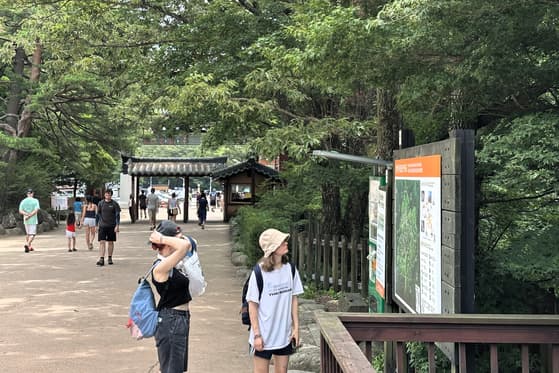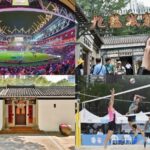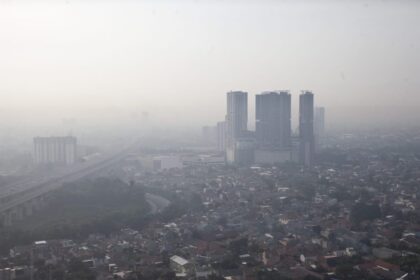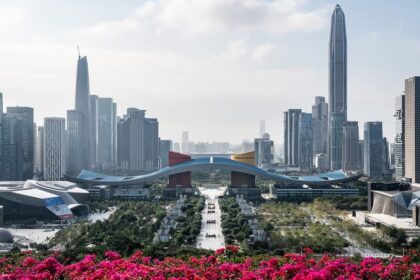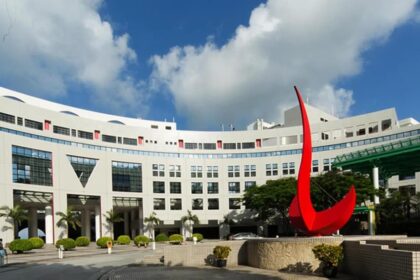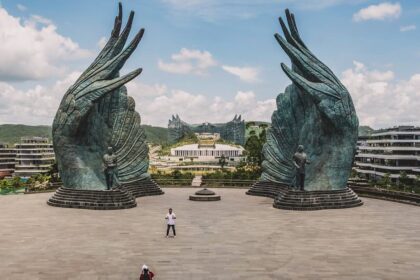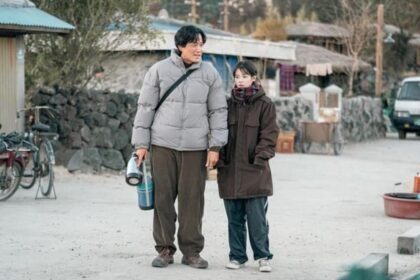A new draw for international visitors
Free entry and well maintained trails are turning Korea’s mountains into a headline attraction for global travelers. The Korea National Park Service (KNPS) reports that 885,282 foreign visitors entered national parks last year, more than five times the 2022 figure. Through September this year, 582,077 foreign visits were already recorded, and park staff expect the real total to be higher once late season counts are in.
The surge has a distinct character. K hiking blends nature with city convenience, a mix that is rare in other capitals. In Seoul, a visitor can step off a subway and start up a forested ridge within minutes. Across the country, popular routes stitch together peaks, temple complexes, coastal ridgelines, and neighborhood streets. Photos of Seoraksan’s crimson fall foliage, sunrise shots from Bukhansan’s granite domes, and cultural stops around Gyeongju circulate widely on social platforms and travel forums, drawing first time visitors and repeat travelers alike.
Cost and ease matter. National parks do not charge admission. Trails are marked in multiple languages, and stairways, rails, or boardwalks help on steeper sections. Beginners can build confidence on short urban routes, while experienced hikers still find challenging scrambles and longer volcanic climbs. After a trek, the ritual often continues with comfort food and drinks nearby, which makes the day feel complete.
James Miller, a 55 year old visitor from Chicago, took his family to Seoraksan after a few days of sightseeing in Seoul. They wanted a mountain day that did not require a rental car or complicated logistics.
He described what stood out most about the experience.
“It was a fun hike, and the food afterward was a highlight. We finished the trail, then found a place for a hearty Korean meal within minutes,” said Miller.
K hiking has moved into the core of many Seoul itineraries that once focused mainly on palaces, markets, and K pop sites. It is a fresh way to see the city’s skyline, meet fellow hikers on the trail, and pair nature with culture in a single morning or afternoon.
Why Seoul makes hiking easy for travelers
Seoul’s approach to hiking is built on access and services. The city promotes hiking as a visitor friendly activity and backs that message with practical help. The Seoul Hiking Tourism Centers at Bukhansan, Bugaksan, and Gwanaksan provide multilingual guidance, gear rentals, lockers, changing rooms, and shower facilities. Staff offer route suggestions by difficulty and time, and the centers run guided experiences that blend trails with cultural activities. The centers have welcomed roughly 40,000 users so far, and the Seoul Tourism Organization says about one in three of those visitors are from overseas.
Each location fills a distinct role. The Bukhansan center, near an entrance to Bukhansan National Park, stocks sturdier gear for rocky and steep slopes. The Bugaksan center, set in a traditional hanok building, focuses on lighter equipment that suits short urban hikes, city wall walks, and picnics. The Gwanaksan center, located inside a subway station, features traveler friendly touches like shoe sanitizers and clothing care machines. Hours typically run from 9:00 to 18:00, with closures on certain days, and advance reservations are recommended for rentals and guided programs.
The city also invites visitors to join the Seoul Top 10 Mountains Challenge. International hikers choose 10 climbs from 23 peaks, take a summit photo with a message towel, then collect a commemorative gift after finishing. Organizers reported hundreds of participants from dozens of countries at the opening, and the most popular mountains for international participants have been Ansan, Yongmasan, and Inwangsan so far.
Accessibility often surprises travelers who expect long drives and overnight plans to reach good trails. Catalina, a visitor from Romania, joined a three hour group hike on Bugaksan with a large international crowd and later described what felt different about hiking in Korea.
“In Korea, it is so easy to go climb mountains. In my country we have very high mountains, but we do not have the same infrastructure. Here, you can take a bus or the subway, start hiking, and be back in time for dinner,” said Catalina.
City officials say the crowds at trailheads now include students, solo travelers, couples on short breaks, and long stay visitors. Staff see rising demand for guided options that add cultural experiences like fortress wall walks, archery tryouts, or temple visits. They also report strong satisfaction scores from foreign participants who praise clear route information, friendly guidance, and affordable rentals.
Usage trends have shifted quickly. Lee Chan ho of the Seoul Tourism Organization said the centers see strong international demand, including at Bukhansan’s location near the national park entrance.
“Foreign visitors now outnumber locals at the Bukhansan center,” said Lee.
For many travelers, the best part is balance. A morning workout in the woods, views over the Han River and city towers, and an easy return to downtown for lunch make K hiking feel spontaneous rather than a major production.
National parks see record foreign attendance
While city trails introduce newcomers to the scene, national parks are the heart of Korea’s mountain travel. KNPS data show a sharp rise in foreign visits. Last year’s 885,282 foreign entries were more than five times the 2022 count, and this year’s total through September already exceeds half a million.
Gyeongju National Park has drawn the largest number of foreign visitors. The appeal is a blend of nature and heritage. A popular course links Bulguksa Temple, the stone grotto of Seokguram, and the artisan and cafe lined streets of Hwangridan gil. Seoraksan ranks second, a favorite for fall color and granite ridges. Hallasan on Jeju Island attracts travelers with a long volcanic ascent across alpine meadows and lava formations. Bukhansan, sitting on Seoul’s northern edge, brings together hikers who want big scenery without leaving the capital. Hallyeohaesang, a sprawling coastal park, offers maritime vistas, island walks, and lighthouse views.
The parks’ free entry policy helps, especially for families and backpackers. Services like multilingual signage, frequent trail markers, rescue call points, and seasonal shuttle buses add reassurance for visitors unfamiliar with local terrain. Many trailheads sit near small restaurants and convenience stores, an advantage for those who prefer to travel light and pick up simple supplies like water, fruit, and kimbap on the way.
Social discovery plays a key role. Instagram feeds and short videos of Seoraksan’s red maples or Bukhansan’s sunrise slabs have multiplied. Many travelers also try routes suggested by search engines and AI tools. Park officials welcome the attention but warn that some online suggestions do not match official maps. They advise checking current advisories and staying on permitted paths.
Food, photos and trail culture
Hiking in Korea comes wrapped in vivid traditions. At scenic overlooks and summits, hikers share instant noodles and gimbap, then clink paper cups of cool drinks before the descent. The ramen steam, the photos with finger heart poses, and a quick chat with fellow hikers are part of the fun. On busy weekends near Seoul, it is common to meet groups who gather at the trailhead, swap snacks at the top, then head for a bowl of soup or crispy jeon and a glass of makgeolli at a local eatery.
Visitors describe a social atmosphere that feels welcoming even to those who arrive alone. Paths are active from early morning, which makes many first time hikers feel at ease. Clear wayfinding, frequent rest areas, and nearby public transit make it simple to adjust plans if weather shifts or legs feel tired. On urban routes, city panoramas appear suddenly between trees, and sections of the ancient Seoul City Wall add history to short walks.
Popular city choices include Bukhansan’s varied ridge scrambles, Bugaksan’s wall side views looking over the Blue House area and central Seoul, and Gwanaksan’s rugged slopes above Seoul National University. Well maintained stairs, rails, and occasional fixed cables appear on more exposed sections, and wide dirt lanes guide families and casual walkers through lower valleys.
Safety lessons as trail traffic grows
Rising numbers bring more rescues. Park rangers say some visitors arrive without proper shoes or maps, or they stray onto unmarked tracks after following a stranger’s GPS track. In one case this year, five Russian tourists attempting a nighttime push to Seoraksan’s Daecheongbong Peak needed help after heading out without flashlights or basic cold weather gear. The group was located and escorted down, and rangers repeated a simple message that applies across Korea’s mountains.
A representative of the Seoraksan National Park Office summarized the guidance they want every visitor to hear before a climb.
“Please check official maps and advisories, start early, and stay on marked routes. Avoid night hikes, and if you are unsure, go with someone experienced or join a guided group. Some routes suggested online are not official trails,” the official said.
Local governments are also making navigation easier. Jeonnam province launched a project to assign official road names to hiking paths across 15 sections in five cities and counties. Trails and nearby facilities now carry addresses that appear in navigation apps, which reduces confusion and speeds up emergency response. Visitors will find public restrooms, shelters, and information centers more easily, and managers can track maintenance needs with less guesswork. Newly named routes range from the Goraksan Circular Trail in Yeosu to the Palyongsan Cypress Healing Forest Trail in Goheung and the Bulgap Reservoir Water Meditation Trail in Yeonggwang.
Technology is joining the toolkit during crowded seasons. At Naejangsan National Park, an AI tourism butler service was rolled out to manage peak foliage congestion and safety. The system analyzes visitor density, shows real time parking availability, and can guide drivers to the next open lot through integrated navigation. A sound based feature listens for distress audio, such as shouts for help, and sends alerts to a control dashboard. Multilingual guidance supports international visitors, including live interpretation for tours and automated translations on QR coded signs. The service was developed with the Korea Tourism Organization (KTO), Jeongeup City, and private partners.
Seoul’s trailheads already include useful additions like air dust blowers to clean gear and safe, sturdy paths in higher traffic zones. Most parks publish daily advisories about weather, closures, and wildfire conditions. Travelers can reduce risks by carrying a headlamp even for day hikes, packing layers for quick weather changes, and keeping an eye on time so they reach lower elevations before dark.
Planning your first K hiking day
First time visitors can have a strong experience without a long time commitment. Picking routes by travel time, terrain, and post hike food options helps the day run smoothly. Below are options and tips drawn from what international hikers choose most often.
Where to go first
Bukhansan: Multiple valleys and ridges suit a wide range of abilities. Granite domes give wide views over Seoul, and well marked trails begin right at the park boundary. Weekends are lively, so early starts help.
Bugaksan: Shorter urban routes with historic interest. Sections of the Seoul City Wall, views toward central Seoul, and easier paths make this ideal for a half day. Some areas have time based entry, so check current hours.
Gwanaksan: Rugged and photogenic. Slabs, rail assisted sections, and dramatic boulders above Seoul National University appeal to hikers looking for a workout. The new center inside the subway station adds convenience.
Gyeongju National Park: A nature and culture blend. Combine forested hills with stops at Bulguksa Temple, Seokguram Grotto, and Hwangridan gil. The area works well for families and history fans.
Seoraksan and Hallasan: For a full day. Seoraksan offers fall color and granite scenery. Hallasan on Jeju is a longer volcanic ascent. Check for seasonal advisories, trail quotas, and weather before you go.
What to pack and how to prepare
- Footwear with grip. Trail shoes or light boots handle stairs and rock better than street sneakers.
- Layers and rain protection. Weather changes quickly in the mountains.
- Water and simple food. Many locals carry kimbap or fruit, then enjoy a hot meal after the hike.
- Navigation. Use official maps from park offices or visitor centers. Marked trails are the safest choice.
- Timing. Start early and plan to be off steep sections well before sunset. Night climbs are discouraged.
- Etiquette. Stay on designated paths, pack out trash, and keep voices low in temple zones.
- Services. The Seoul Hiking Tourism Centers at Bukhansan, Bugaksan, and Gwanaksan provide rentals, lockers, showers, and multilingual guidance. Guided hikes and cultural experience programs run on set schedules.
Those who want an extra challenge can try the Seoul Top 10 Mountains Challenge. The format is simple. Hike ten peaks from a list of 23 within the city, take a summit photo with a message towel, and receive a small gift for finishing. Organizers say Ansan, Yongmasan, and Inwangsan have been the busiest peaks for international participants.
How cities are building hiking into daily life
Seoul’s hiking boom did not happen by accident. The city is ringed by more than 100 named mountains, and planners treated this geography as an asset for public life. Investments in walkable streets, green corridors, and public transit made it easier to reach trailheads without a car. The Seoul Trail, which loops through foothills around the capital, and restored paths along the historic fortress wall create clear routes where people can combine exercise with heritage and city views.
Researchers who analyzed thousands of hiking reviews found that accessibility and aesthetics drive satisfaction. Visitors value the ease of reaching a mountain by bus or subway, the clarity of trail markers, and the drama of seeing dense city blocks spread below from open rock. This blend of walkable urbanism and nature based leisure shows how a mega city can turn geography into everyday recreation that appeals to residents and tourists at the same time.
Transit to trail integration continues to expand as more signs, online guides, and community events bring newcomers onto the paths. Seasonal festivals, plogging events that pair picking up litter with exercise, and evening gatherings for hikers keep interest high beyond peak foliage weeks. The approach also spreads visitor traffic across many sites, which helps protect fragile areas.
Key Points
- KNPS recorded 885,282 foreign visits to national parks last year, more than five times 2022. Through September this year, 582,077 had already visited.
- Gyeongju National Park drew the most foreign visitors, followed by Seoraksan, Hallasan, Bukhansan, and Hallyeohaesang.
- Admission to national parks is free, and trails are well marked, which lowers barriers for first time hikers.
- Seoul’s Hiking Tourism Centers at Bukhansan, Bugaksan, and Gwanaksan rent gear, provide lockers and showers, and offer multilingual route advice and guided programs.
- The Seoul Top 10 Mountains Challenge invites visitors to climb ten peaks in the city and claim a commemorative gift.
- Cultural touches like kimbap at the summit and makgeolli after the hike are part of the K hiking experience.
- Park officials urge visitors to use official maps and avoid unmarked or night routes after rescues increased with rising trail traffic.
- Jeonnam province is naming hiking trails and facilities with official addresses to improve navigation and emergency response.
- An AI tourism butler at Naejangsan manages crowds, shows real time parking, and offers multilingual support during the autumn rush.
- Seoul’s mix of walkable streets, public transit, and scenic mountains makes hiking a simple add on to a city itinerary.


